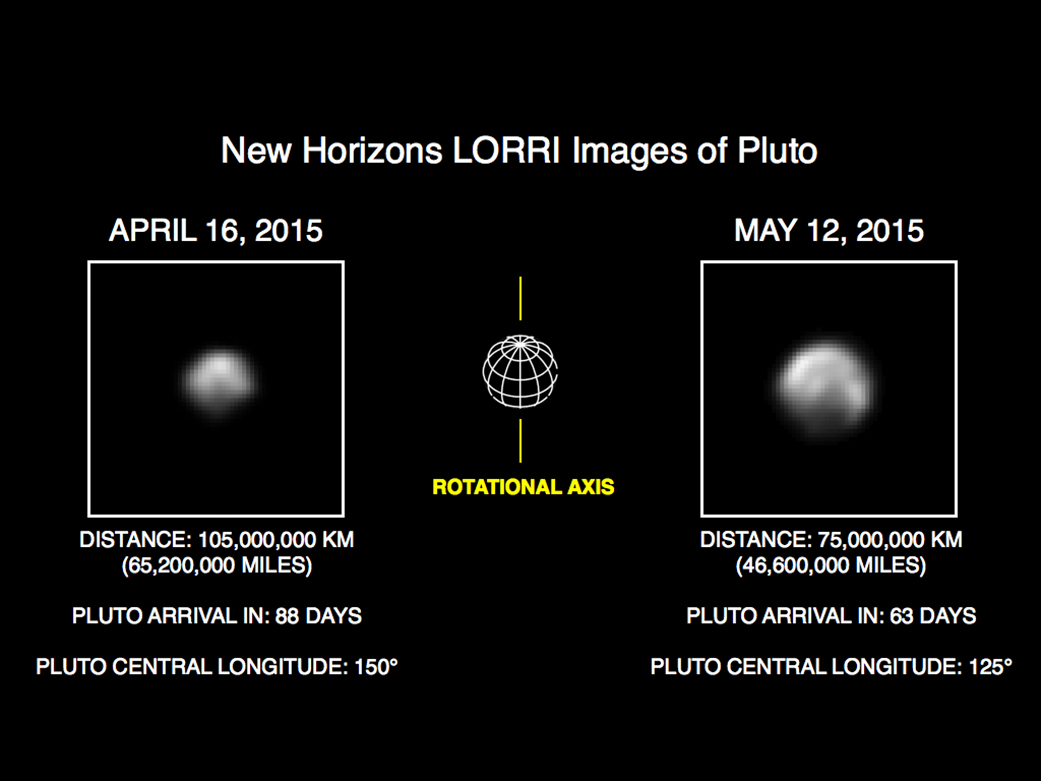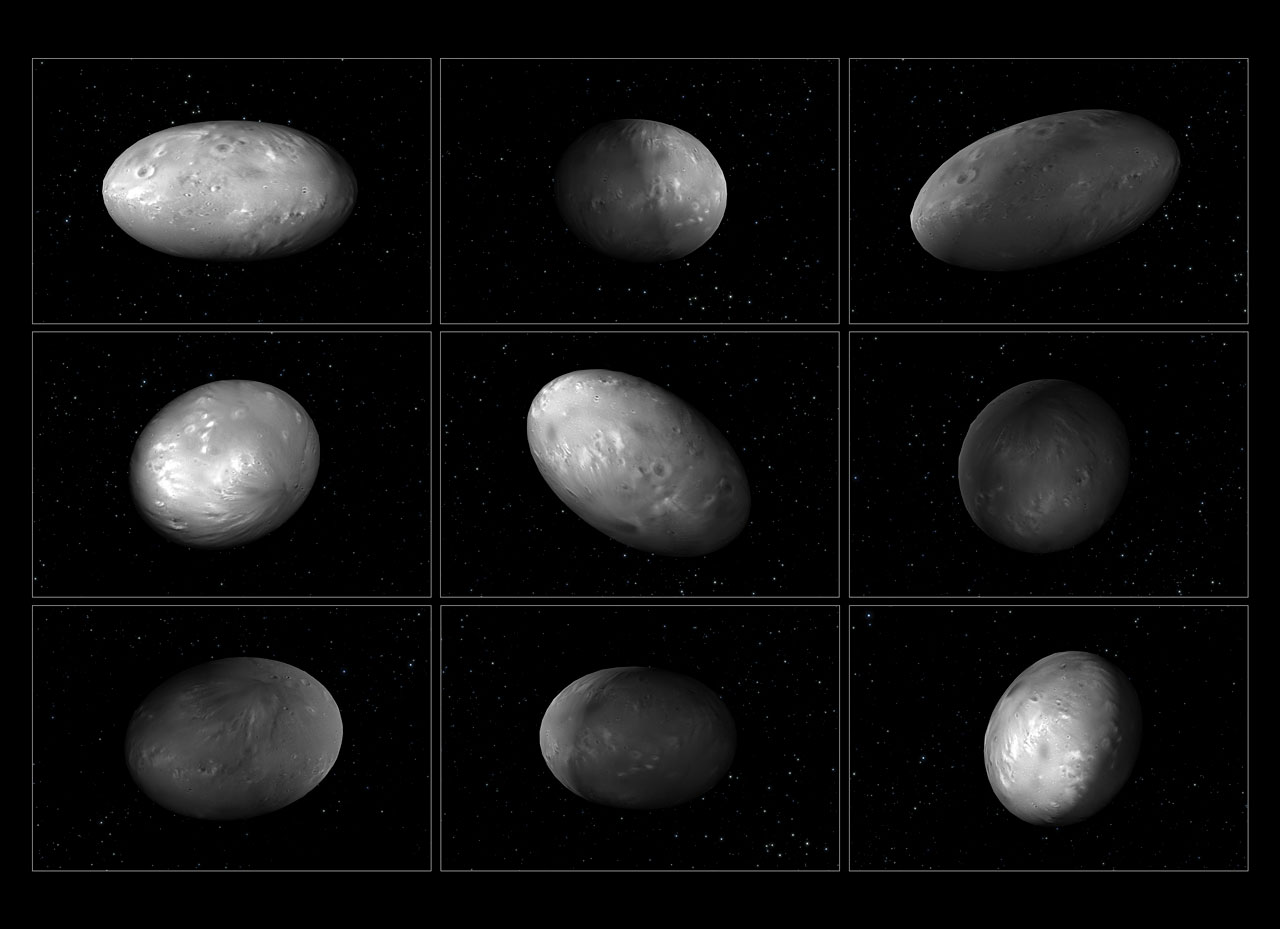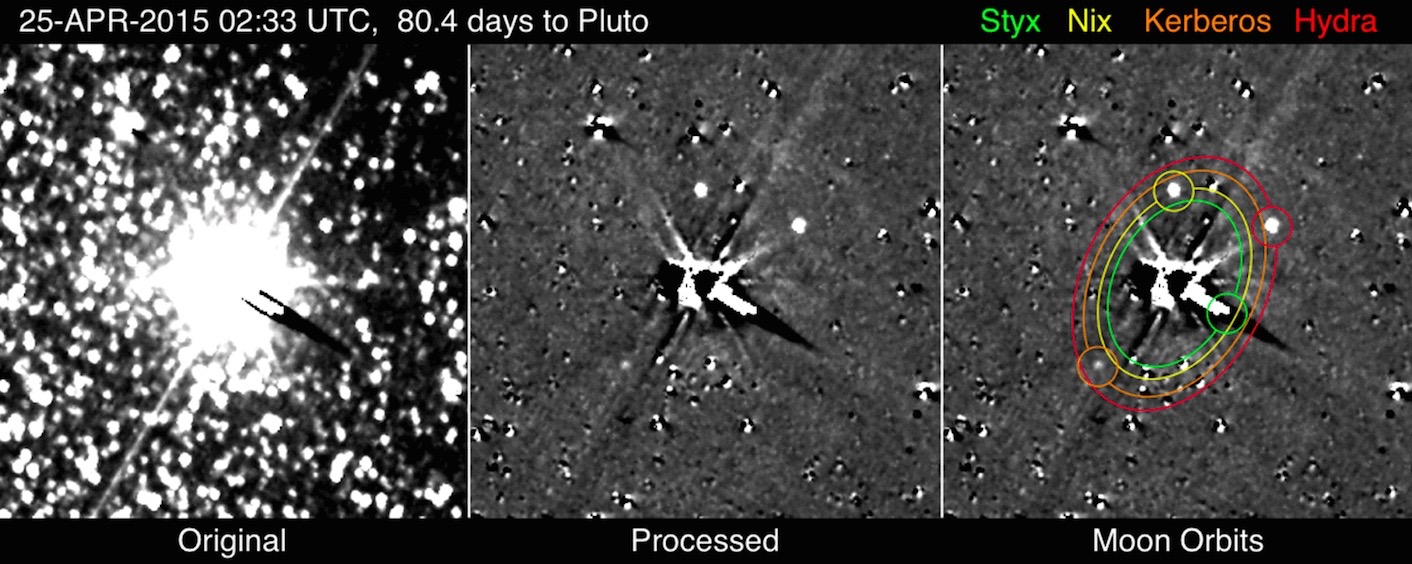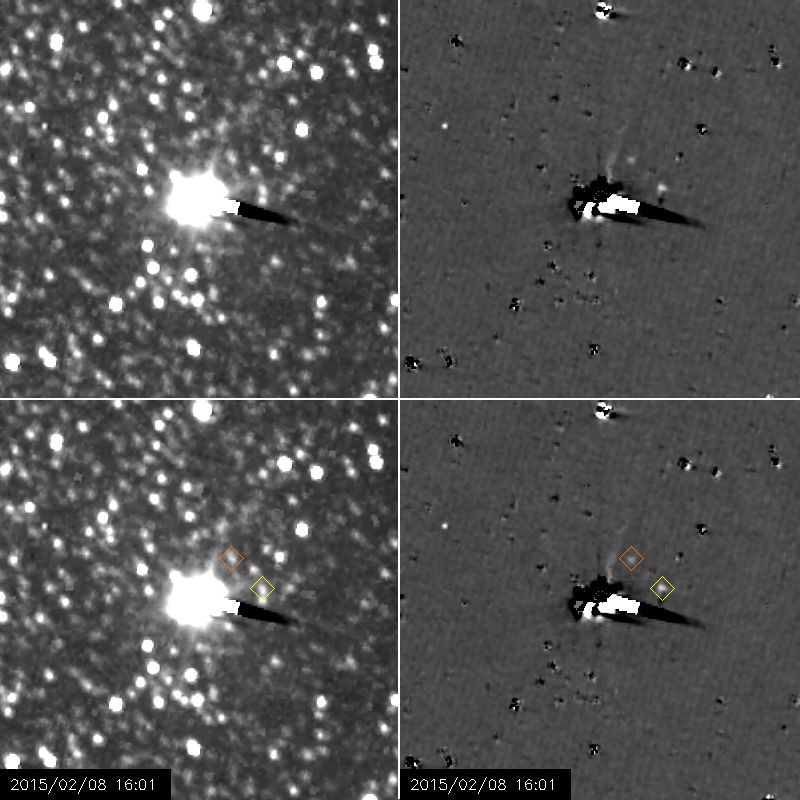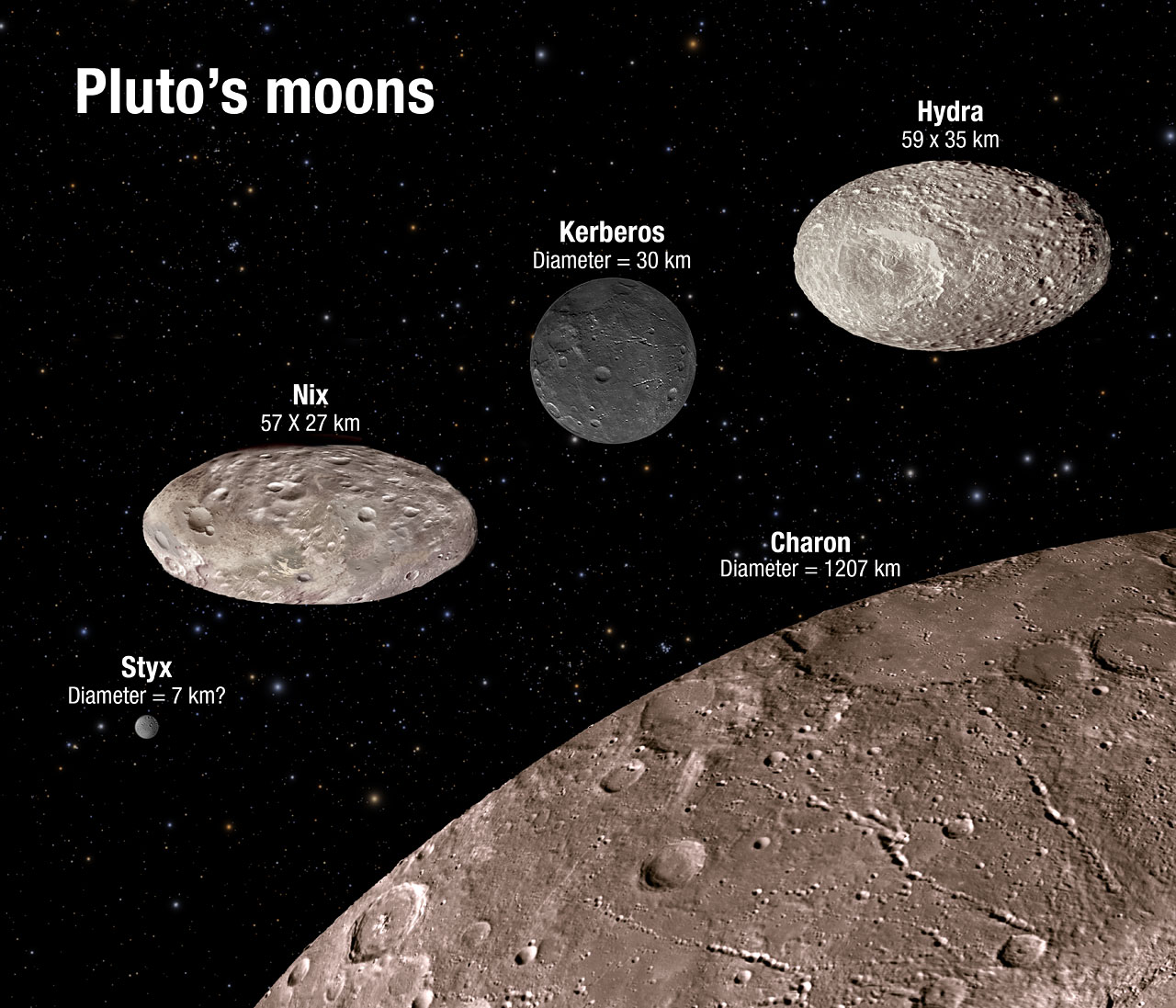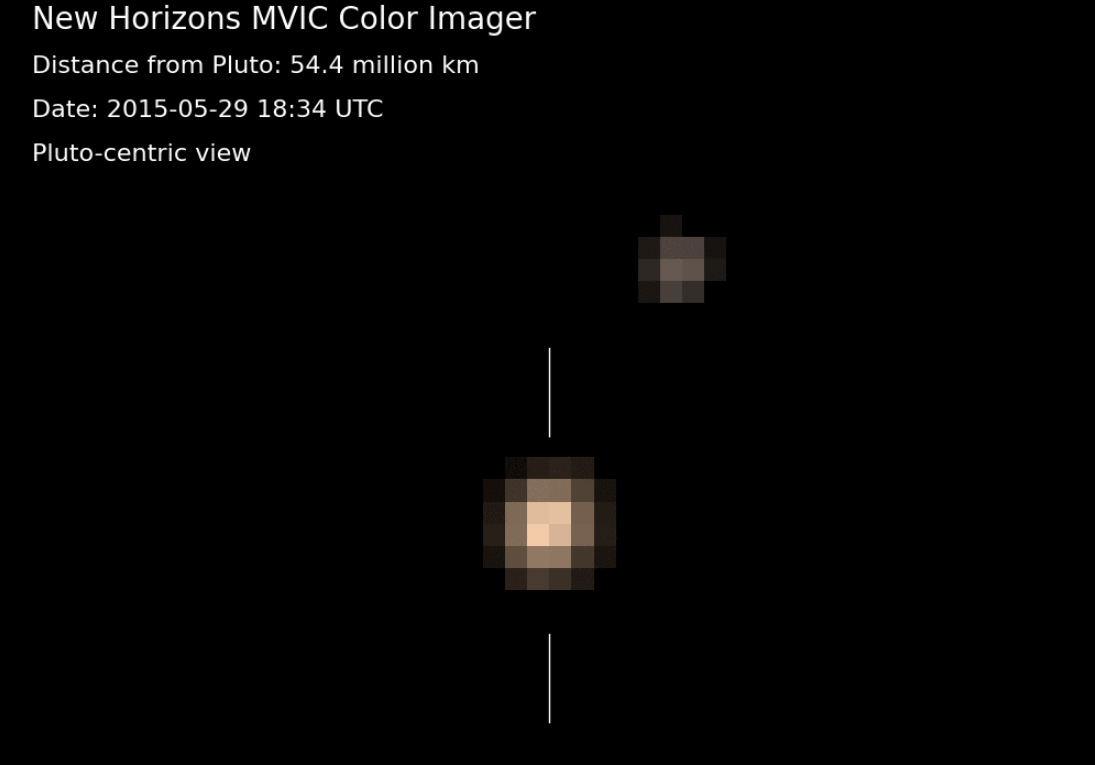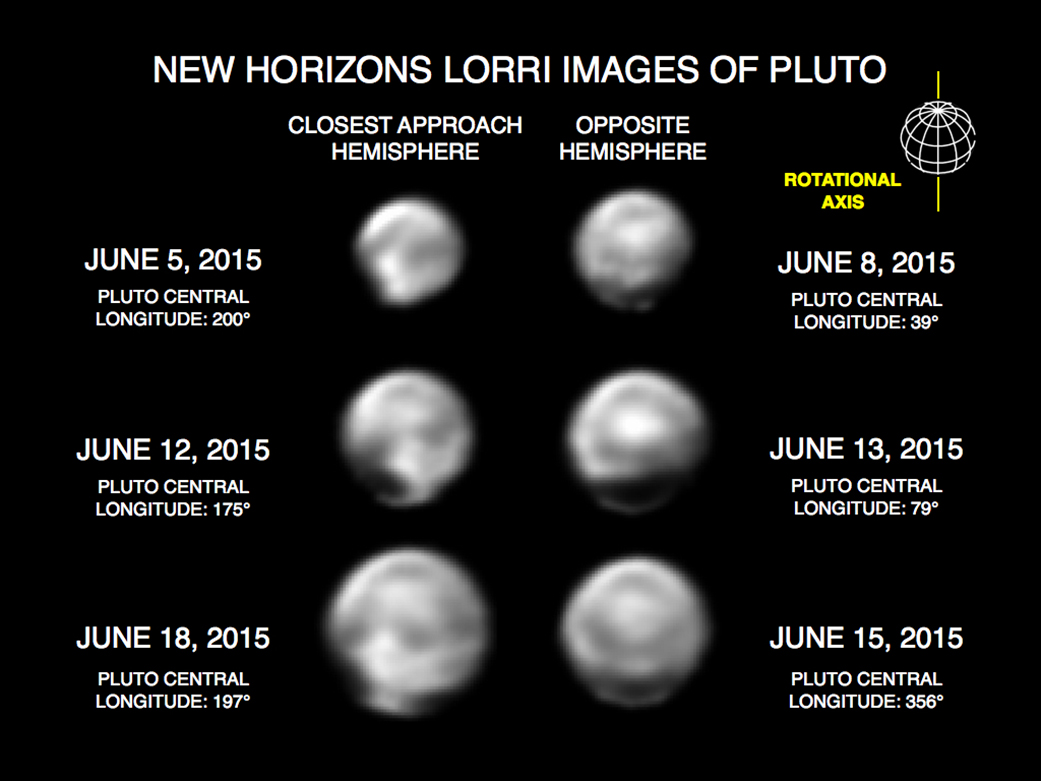Photos of Pluto and Its Moons
Long Range Reconnaissance Imager Images of Pluto
These images of Pluto from the Long Range Reconnaissance Imager on NASA's New Horizons spacecraft show views of the dwarf planet as it rotates, revealing details about the dimensions of its dark surface patches.
New Horizons LORRI Images of Pluto April 15 and May 10, 2015
This image taken on May 10, 2015, shows Pluto in the latest series of New Horizons Long Range Reconnaissance Imager (LORRI) photos, compared to a LORRI image taken on April 15.
New Horizons LORRI Images of Pluto April 16 and May 12, 2015
This image taken on May 12, 2015, shows Pluto in the latest series of New Horizons Long Range Reconnaissance Imager (LORRI) photos, compared to a LORRI image taken on April 16.
New Horizons LORRI Images of Pluto April 12 and May 8, 2015
This image taken on May 8, 2015, shows Pluto in the latest series of New Horizons Long Range Reconnaissance Imager (LORRI) photos, compared to a LORRI image taken on April 12.
Pluto’s Moon Nix Chaotic Spin
These illustrations of Pluto’s moon Nix show how the orientation of the moon changes unpredictably while it orbits the Pluto-Charon system.
New Horizons Captures all 5 of Pluto's Known Moons
NASA's New Horizons spacecraft captured these views of Pluto and its moons on April 25, 2015.
Pluto Moons Nix and Hydra Spied by New Horizons
NASA's New Horizons probe captured these views of the Pluto moons Nix (yellow diamond) and Hydra (orange diamond) between Jan. 27 and Feb. 8, 2015. Pluto and its largest moon, Charon, are the fuzzy white blob in the images' center. Right-hand images have been processed to remove glare created by Pluto, Charon and background stars.
Breaking space news, the latest updates on rocket launches, skywatching events and more!
Pluto's Moons: Size and Brightness
This illustration shows the scale and comparative brightness of Pluto’s four tiny moons, as observed by NASA's Hubble Space Telescope from 2005 through 2012. Pluto’s binary companion, Charon (discovered in 1978) is placed at the bottom for scale. The textures seen here are purely for illustration purposes.
Pluto and Charon - Pluto centric View
This color view of Pluto and its largest moon Charon show the pair in a Pluto-centric view as seen by NASA's New Horizons spacecraft during one of nine observations between May 29 and June 3, 2015. New Horizons will fly close by Pluto on July 14.
New Horizons Spies Surface Features on Pluto
These images, taken by New Horizons' Long Range Reconnaissance Imager (LORRI), show numerous large-scale features on Pluto's surface.

Space.com is the premier source of space exploration, innovation and astronomy news, chronicling (and celebrating) humanity's ongoing expansion across the final frontier. Originally founded in 1999, Space.com is, and always has been, the passion of writers and editors who are space fans and also trained journalists. Our current news team consists of Editor-in-Chief Tariq Malik; Editor Hanneke Weitering, Senior Space Writer Mike Wall; Senior Writer Meghan Bartels; Senior Writer Chelsea Gohd, Senior Writer Tereza Pultarova and Staff Writer Alexander Cox, focusing on e-commerce. Senior Producer Steve Spaleta oversees our space videos, with Diana Whitcroft as our Social Media Editor.


